The Royal Navy’s new £135 million Ancilia decoy system was recently demonstrated to a group of experts in Devon, offering a first look at the technology designed to protect warships from advanced missile threats.
According to a Royal Navy announcement, the system was showcased to over two dozen specialists, including military personnel, civil servants, scientists, and engineers involved in electronic warfare and warship programmes.
The Ancilia system, developed by Barnstaple-based firm SEA (Systems Engineering and Assessment), is intended to replace the existing Seagnat decoy system currently used on major Royal Navy vessels.
SEA describes Ancilia as a more advanced system that is smaller, lighter, and capable of firing multiple countermeasures. Unlike Seagnat, which is fixed in place, Ancilia is designed to swivel and adjust its firing angle to better respond to threats, allowing ships to remain stationary while countering incoming missiles.
During the visit to SEA’s facility, the Ancilia system was put through a live demonstration. Neil Clelland, Senior Principal Anti-Ship Missile Scientist with Dstl, commented on the system’s performance, saying, “It was impressive to witness SEA’s pre-production Ancilia trainable launcher put through its paces in front of all the stakeholders.” He noted that the demonstration showed significant engineering progress early in the design phase, according to the Royal Navy.
The Ancilia system, which is expected to be part of the Royal Navy’s future electronic warfare capabilities, will be integrated with the Maritime Electronic Warfare Systems Integrated Capability (MEWSIC).
The Royal Navy plans to fit two Ancilia systems on each of its six Type 45 destroyers and equip the next-generation frigate force, including the Type 26 City-class sub-hunters and Type 31 Inspiration-class warships.
Electromagnetic warfare, including systems like Ancilia, plays a critical role in naval operations by identifying enemy forces, jamming weapons, and deploying decoys to mislead incoming missiles.
The current Seagnat system, which Ancilia aims to replace, uses a set of 130mm mortars to fire decoys, such as flares for heat-seeking missiles and chaff for radar-guided threats. The Royal Navy suggests that Ancilia will offer more flexibility and effectiveness in protecting ships against modern missile threats.


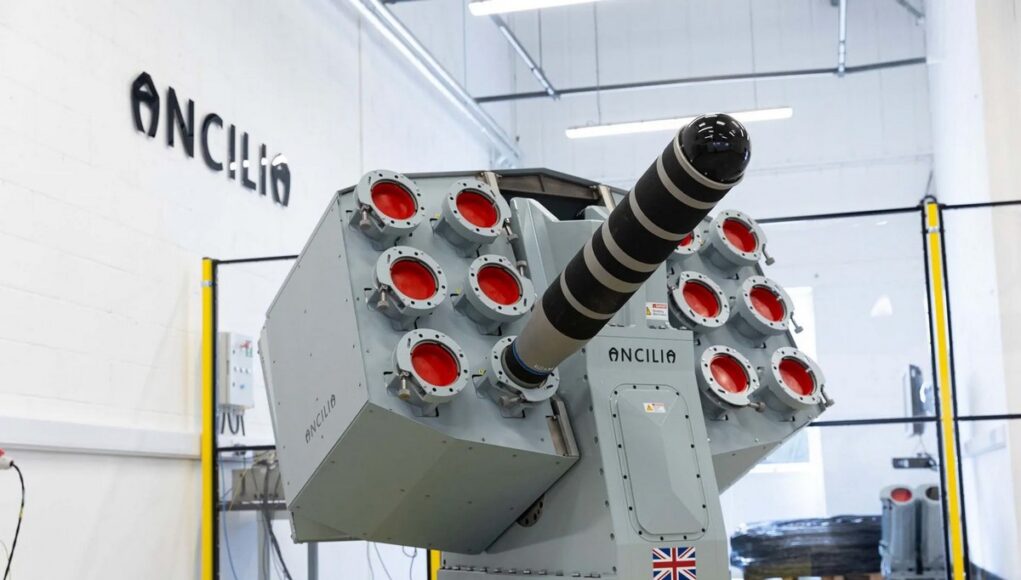
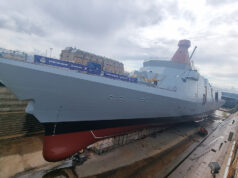
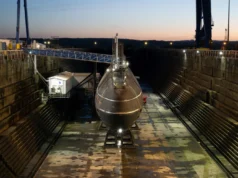

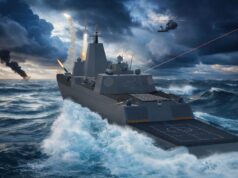
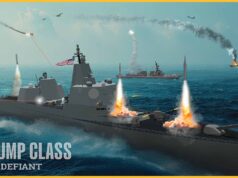
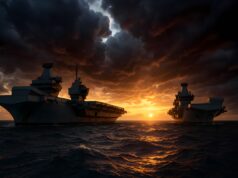


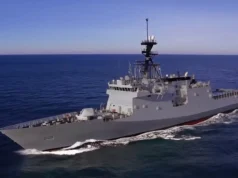

“better respond to threats, allowing ships to remain stationary while countering incoming missiles.”
Why would they want to?? I thought ships would manoeuvre to present as minimal a target away from a threat as appropriate, not just sit on the spot?
I think what it means is that the ship doesn’t have to maneuverer to engage the target rather than the ship won’t be manoeuvring during a missile attack.
Modern anti ship missiles attack in swarms from different directions so it’s not going to be possible to turn the ship in a particular direction to reduce its RCS and or engage a target.
Stationary is a bit of an odd way to put it. But the escorts would have more freedom to manoeuvre into the threat..essentially if escorting capital vessels the escorts would have more freedom to manoeuvring to put themselves in the way and clear hard kill firing arcs.
mustn’t assume the ship will only be attached when it has freedom of manoeuvre. This would allow a response even if for instance transiting a narrow channel
Ships will continue to manoeuvre.
But a trainable decoy system means that the ship doesn’t have to manoeuvre to unmask and direct the fixed launchers, it can concentrate on the appropriate manoeuvres to protect itself first, without having to position to launch decoys at the correct threat bearing then manoeuvre.
Thanks, and thanks all.
The “stationary” wording confused.
Reasking a question as to why these aren’t also being put on the carriers and RFA ships when there’s definitely space for them? And they’ll need them in a conflict zone!
It looks such a neat launcher thar it could be adapted to fire 12 rounds of Starstreak/LMM, which might be useful for ships not carrying CAMM.
What ever happened to the Centurion trainable launcher that the RN looked at some time ago? How is the SEA Ancilia launcher any better?
No mention of adding it to the carriers???
£135mio for 38 units is £3.5mio each – WOW!! It better be good!! I assume the deal includes training, decoy stocks, etc.,???
Centurion seems to be mechanically more complex since as well as rotating it also has all its decoy launchers folded up into the thimble shape so presumably there are extra moving parts to fold out a launcher to make it ready to fire its decoy. I would think that fewer moving parts in the Ancilia system might mean less maintenance and better reliability (or at least more confidence in whatever minimum reliability figure the RN is targeting) although from looking at the profiles of Centurion vs Ancilia when not active (i.e. when Centurion has all of its launchers folded in) I’m wondering if maybe Ancilia’s simpler design might come at the expense of a slightly higher radar cross section. And then again I suppose the extra complexity of Centurion’s fold-out launchers might make it a more expensive option than Ancilia.
Both look like credible solutions to me and as with so many things it’s probably a matter of trade-offs with pros and cons for each system. I’m just glad the RN is investing money in improving soft-kill systems. In my opinion another nice uplift would be to look at transitioning to 40mm for CIWS on more of the fleet now that the 40mm is coming into service on the T31 but without any sizeable increase in defence budgets I suspect that such a project might be too far down the priority list to be allocated the required budget to make it happen. It would be nice if at least new builds such as FSS, MRSS and T83 could break away from the 2 x 30mm + 2 x Phalanx (the later not always fitted) in favour of something a bit more punchy when they get to final specifications.
It wont just be the launcher. There are all the ancillaries below decks as well. So the interface consoles between the launcher and the ships command system, the computer system that will tell take various sensor inputs , do calculations on seed patterns and decoy deployments, fire them and then work out the next patterns and when to fire them.
The current Sea Gnat isn’t just some launchers on the deck there are a whole bunch of cabinets below decks as well.
Training is probably included, including the Ref set at C’wood. Spares and support/fitting is going to be included as well.
As it fires all of the current decoys they will be already in service so they wont be included.
Am i misremembering that when announced it was stated that the Ancilia launcher can take Marlet rounds?
Not stated, it became a bit of a debate on here whether it could be adapted to because the calibre and shape of the ammunition is about the same as a Martlet tube.
The end result IIRC was “It would be nice if it did and wouldn’t take much work, but not at the moment”
Morning SB, my early post here asking the same has completely disappeared. It could theoretically have a 4-6 missile pod one side and the 6 tube decoy the other, plus additional optics if needed. Why this is listed also for the carriers and RFA ships too?
Doing a run through of old article comments? I’ve had three replies from you in the last couple of minutes
Yes, I think an entirely new variant of Ancilia would have to be developed specifically to hold both decoys and missiles, as a sort of “Universal Defensive System” that could also use self contained sensors to cue the decoys and targeting equipment for missiles.
I can’t think of a ship in the Naval service that that wouldn’t be a cost effective set of equipment for, especially as the combination can be set based on the threat level.
All we need now is an antimissile missile based on the StarStreak/LMM tube fit.
You would still need a Laser /EO sight somewhere to illuminate a target
Yes, and modifications to the back to allow exhaust out.
You’d certainly have to develop a new “dual purpose” mount, but structurally there wouldn’t be too much change
Having looked at the picture of the launcher ,adapt it to fire martlet missiles, I know they are fitted to the gun on the 30mm ,a bit of a flight of fancy I know but a bit of Imagination can get people thinking 🤔 😀 😉 😄 😜
It’s been suggested and debated before on here, see my reply to Challenger above.
Just saw your comment on the Navy lookout relating to this. I would rather have multiple tubes on the 30mm reserving space for the decoys.
So now my old comments are being read?
This “commenting online” stuff is getting spooky!
I’m of the same opinion, back blast notwithstanding, but it was a very interesting technical discussion.
Indeed.
Why only two units per ship ? The MOD drives me insane with the stingy outfitting of weapon systems,look at the OPVs they really are pathetic.
Oh have I missed something about the type 32s ? Is that binned now ?
It’s the decoy launcher, not a weapon.
You only need one decoy to get rid of an anti ship missiles, in theory, and the two launchers are to give 360 degree coverage from each side of the ship.
If a River had anti ship missiles fired at it, whether it can defend itself is the least of Britain’s problems (although the crew might argue differently).
I see they are still not considering putting it on the carriers.
I always puzzled by fixed decoys launchers in UK and some others. French and Italians always had rotating ones. Sagaie and SCLAR respectively.
We’ve just been dragging our feet on updating.
Sea Gnat is an intelligent system. It takes various inputs, speed, windspeed and direction, course, threat axis and threat type. It “suggests” ASM courses to steer. You manoeuvre as you need to, and the launchers fire off the decoy rounds as required fully automatically. It works out seed patterns and reseeding times for the decoys in use . All you need to do is keep feeding new rounds into the launcher.
The trainable launcher will do the same but improve the ships course options as it won’t need to steer as strict an ASMD course because the launcher can train as well. That said you will still take the systems advice…it can do the calculations and work out seeding far better than a human. You wont want to ignore it, sail a course fire a decoy and suddenly find out you have stuck yourself in the middle of a seduction chaff cloud because you didn’t factor in the wind speed and direction.
Decoys are a fun system to work on and underappreciated by some. Simple inputs from the Anemometers, ships log, gyro repeats suddenly become a high priority data source’s with a priority to keep them working that is often higher than say a gunnery or missile system. Imagine you softkill systems being disabled because your wind speed anemometer stops spinning /sensing…Its a system of systems thing.
French use a mix of fixed and movable, but only in 1 axis. They also don’t fire the standard NATO seduction rounds….
Is it worth using drones to help create smoke screens, if smoke screen curtains (non-toxic) are still viable.
IR decoys produce smoke. However, Imaging IR sensors negate this as they ignore the big white billowing fluffy cloud of hot smoke and the burning material floating down in the sky and burning on the sea and look for a sharp defined ship shaped IR image.
This is where dazzlers are coming to the fore to blind/burn out optical sensors rendering the missile blind and unable to home.